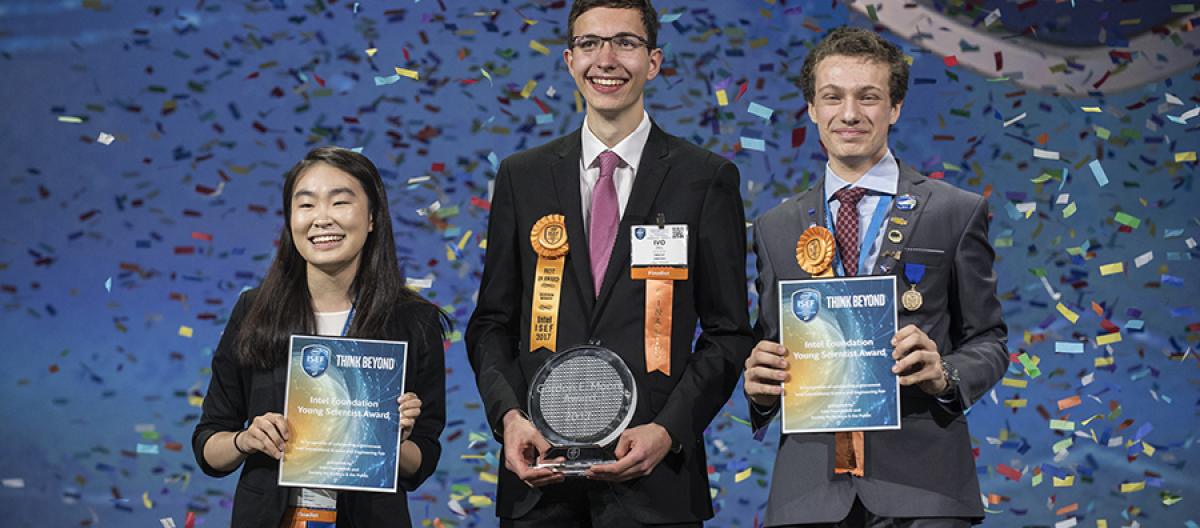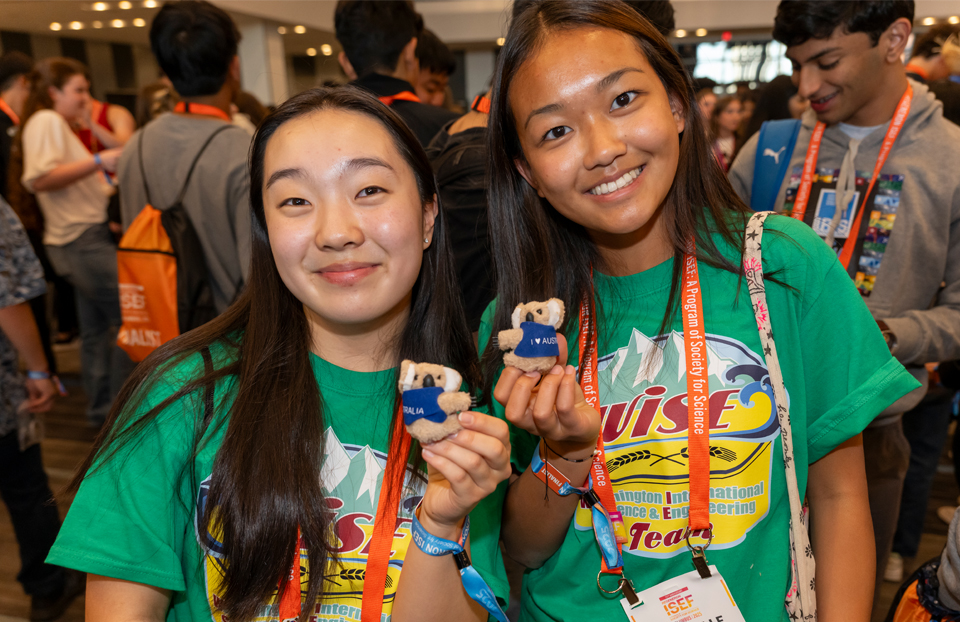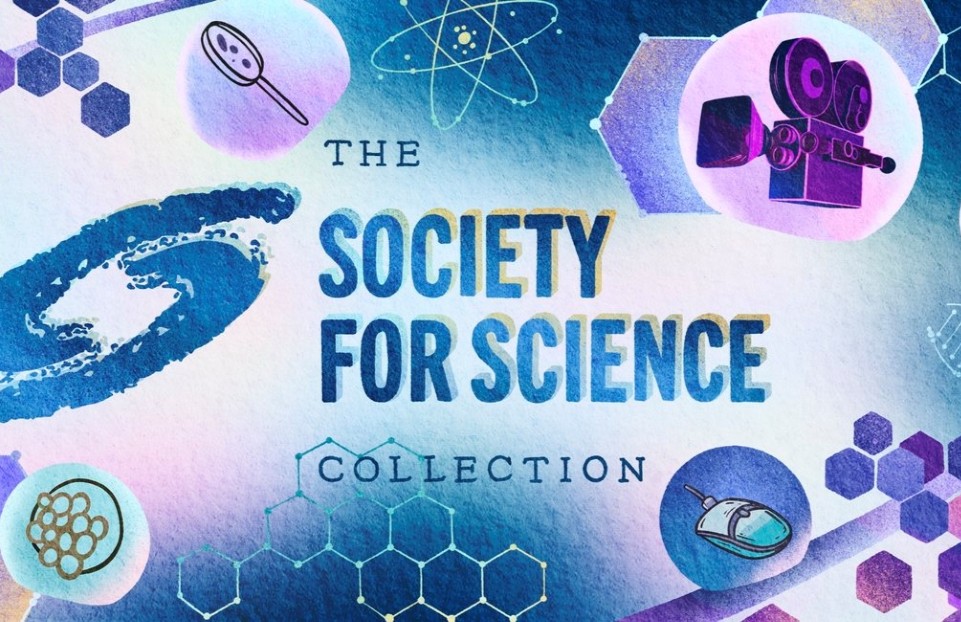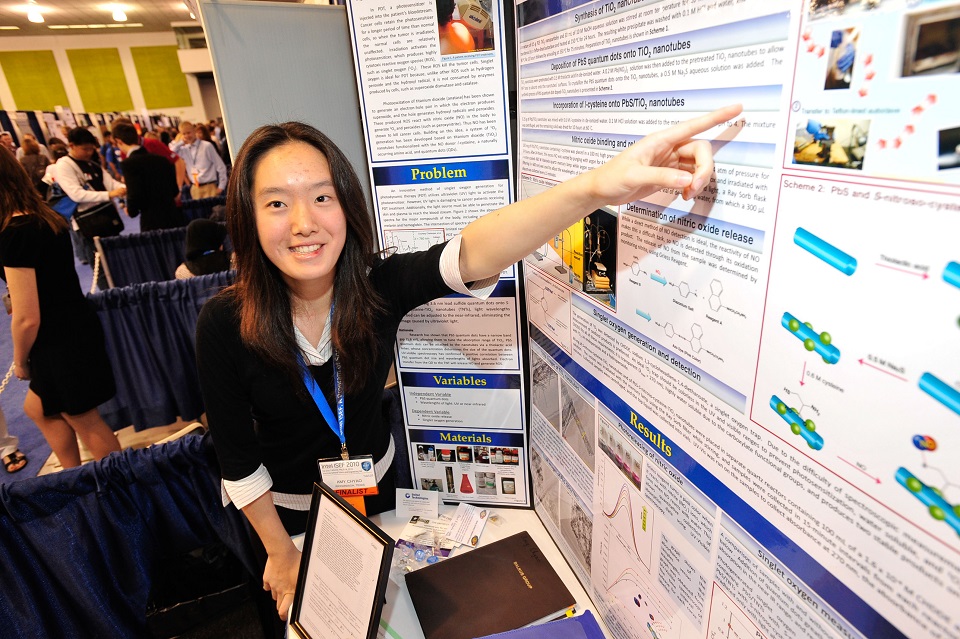Intel ISEF winners create new aircraft design, track space debris, bring reliable Internet to rural towns

Last week in Los Angeles, California, nearly 2,000 high school students from 78 countries, regions, and territories competed in Intel ISEF, the world’s largest international pre-college science competition. At the culmination of the competition, approximately $4 million was awarded to the finalists.
Ivo Zell, 18, of Lorch, Germany received the first place Gordon E. Moore Award of $75,000, named in honor of the Intel co-founder and fellow scientist, for designing and constructing a remote control prototype of a new “flying wing” aircraft. Flying wings are more efficient than traditional aircraft designs, but also less stable in flight because they have little or no fuselage or tail. Ivo’s prototype could be used for drone delivery systems to larger aircraft designs.
Ivo’s working prototype aircraft uses an unusual bell-shaped lift profile for improved stability and telemetry to demonstrate its stability. This modified shape allows it to operate smoothly and safely in challenging flight situations without the need for a complex electronic stabilization system or sacrificing fuel efficiency.
Amber Yang, 18, of Windermere, Florida received one of two Intel Foundation Young Scientist Awards of $50,000 for her innovative approach to predicting the locations of clouds of space debris that move in low Earth orbit. There are an estimated 500,000 space trash objects that pose a potential hazard for spacecraft.
Amber adapted an algorithm to train her own artificial neural network to recognize space objects in a specific debris cloud and predict their future locations.
Valerio Pagliarino, 17, of Castelnuovo Calcea, Italy received the other Intel Foundation Young Scientist Award for his prototype of a novel laser-based, wireless, high-speed network. He was motivated by the lack of reliable Internet access in his rural town. Valerio designed the new system and built and tested a small version of the network using off-the-shelf components.
Approximately 600 finalists received awards and prizes for their innovative research, including 22 “Best of Category” winners, who each received a $5,000 prize. The Intel Foundation also awarded a $1,000 grant to each winner’s school and to the affiliated fair they represent.
“The breakthrough ideas presented at the Intel International Science and Engineering Fair by Ivo Zell, Amber Yang and Valerio Pagliarino truly have the capacity to change our world for the better,” said Maya Ajmera, President and CEO of Society for Science & the Public and publisher of Science News. “As our world grows increasingly complex, we need innovative, transformative ideas to identify new solutions to our world’s most intractable challenges. Congratulations to all our finalists as well as our top three winners on their extraordinary research projects.”
View the full list of Grand Award winners and Special Award winners.


